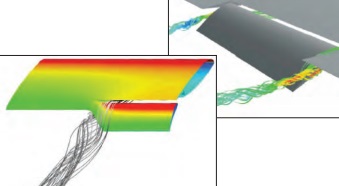Chapter: Hyperelastic Research Lightweight Flexible Aircraft, new invention technology, Research project papers,
Fundamental Hyperelastic Material Study

Fundamental Hyperelastic Material Study
This
research is part of an innovative effort to use hyperelastic materials to
produce flexible and seamless aircraft structures that reduce drag and minimize
acoustic noise. Hyperelastic materials, such as rubber, have a non-linear
stress-strain relationship, which often complicates the modeling process.
Researchers are investigating the properties of hyperelastic materials and
developing improved finite element analysis (FEA) models. This technology has
been shown to improve aircraft aerodynamic efficiency and reduce airport-area
noise generated during takeoffs and landings.
Work
to date: The Armstrong development team has fabricated
the biaxial strain test hardware and completed initial bubble test
planning. The team is working to obtain biaxial strain properties and develop
an FEA model that simulates the material properties and failure
characteristics.
Looking
ahead: The team will fine-tune the modeling in 2014
by comparing the predicted output to an actual bubble test of the
material.
Benefits
Economical: Use of
hyperelastic material increases fuel efficiency by reducing drag.
Quieter: Novel wing flap
reduces noise associated with takeoffs and landings both in the aircraft cabin
and on the ground.
Applications
Aircraft
wing flaps
Helicopter
blades
Motor vehicles, trains, and ships
Hyperelastic Research/Lightweight Flexible
Aircraft
Armstrong engineers are pioneering new
research in aircraft design and modeling. Researchers are experimenting with
revolutionary hyperelastic wing control technologies that can reduce weight,
improve aircraft aerodynamic efficiency, and suppress flutter. Other
cutting-edge research involves techniques, models, and analysis tools for
flutter suppression and gust-load allevia-tion.Flight projects at Armstrong
rely on high-performance aircraft that can support research on lightweight
structures and advance control technologies for future efficient,
environmentally friendly transport aircraft. This work has applicability beyond
flight safety and design optimization.Armstrong's R&D capabilities in this
area also can be applied to other vehicles, such as supersonic transports,
large space structures, and hypersonic vehicles.
Related Topics